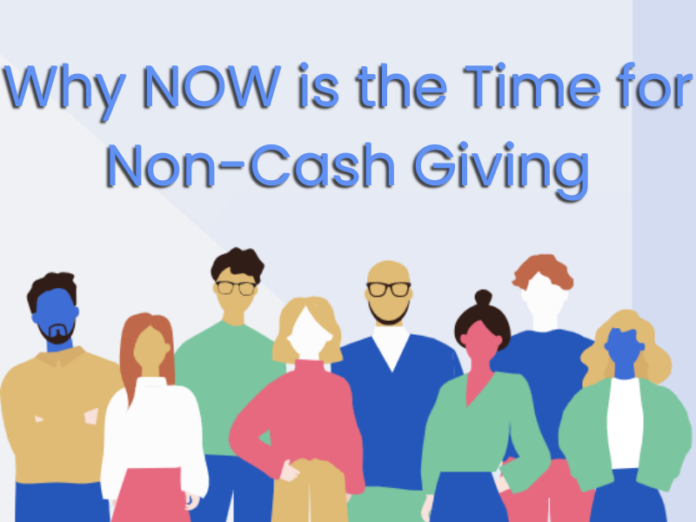Written by Steve Latham, co-founder and CEO of DonateStock
In my last article for NonprofitApps, I discussed what, why and how to do stock gifting. In this note I’d like to explain why NOW is the time to lean into non-cash giving and why stock gifting is the unclaimed prize that is available to all nonprofits that are serious about diversifying and growing revenue.
Philanthropy is at an inflection point. After the first material decline in giving in more than a decade, fundraisers are facing serious headwinds in the form of inflation and economic uncertainty.
The cost of living has increased, putting pressure on most family budgets. With fewer dollars to spare, there is left to give to their favorite charities, schools, and community organizations. Fears of a recession are adding weight to the lid on giving. To top it off, consumer debt is reaching an all-time high. The net result is undoubtedly going to be a tough year for cash, check and credit.
While the dollars in our wallets might be dwindling, the assets in our investment accounts remain substantial. In fact, half of US households own an astounding $30 trillion in securities. That’s a goldmine of resources waiting to be tapped: we conservatively estimate investors could donate $75 – $100 billion per year. There is another $250 billion sitting in Donor Advised Fund accounts, just waiting to be distributed.
Now more than ever nonprofits, must expand their horizons and lean into new sources of non-cash giving.
As I write this in mid-October, the S&P is closing in on its all-time high while the most widely held stocks (Alphabet, Apple, Nvidia, Microsoft, Meta, Amazon and Tesla) are near 52-week highs.
If you consider that half of US households own stock, it stands to reason that most donors who make significant cash gifts also own stock. And stock offers unmatched tax benefits over cash – namely the ability to avoid capital gains tax while deducting the current value of gifted stock that was held for more than 1 year.
Also keep in mind more than 70 million baby boomers’ assets are heavily concentrated in financial investments. Those over the age of 72 are highly incentivized to donate those assets to charitable organizations to reduce the tax liabilities.
Historically, stock gifting was seen as a privilege of the wealthiest 1%, enabling them to fund the largest 1% of nonprofits and foundations. In 2022 Elon Musk saved $5 billion in taxes by making a tax-deductible donation to a private foundation (hopefully that money will make its ways to worthy causes soon).
The good news is that the game has changed. Stock gifting is now accessible to all donors and nonprofits.
The playing field has been leveled, allowing everyone to harness the power of their investments for a good cause. It’s not just about the top tier of philanthropy anymore; it’s about democratizing stock gifting and allowing all donors to give smarter.
In conclusion, the challenges of inflation and economic uncertainty have undoubtedly made charitable giving more complicated. However, the power of stock gifting, accessible to all, holds the potential to revolutionize the way we give and support the causes we hold dear.
Now more than ever, stock gifting should be at the top of the To-Do list for nonprofits of all sizes. Those who lean in stand to gain the most, so let’s embrace this change and ensure that the causes that matter remain strong in these uncertain times.
To learn more about stock gifting and how to launch and grow your own program (no brokerage required) please visit us at https://donatestock.com/for-nonprofits.

